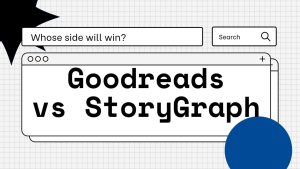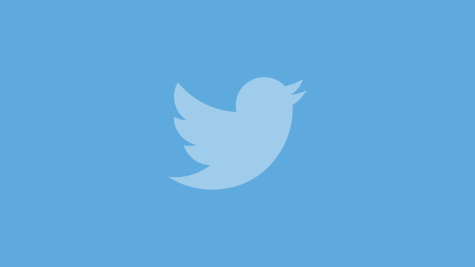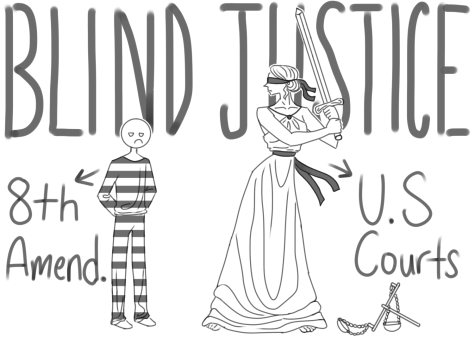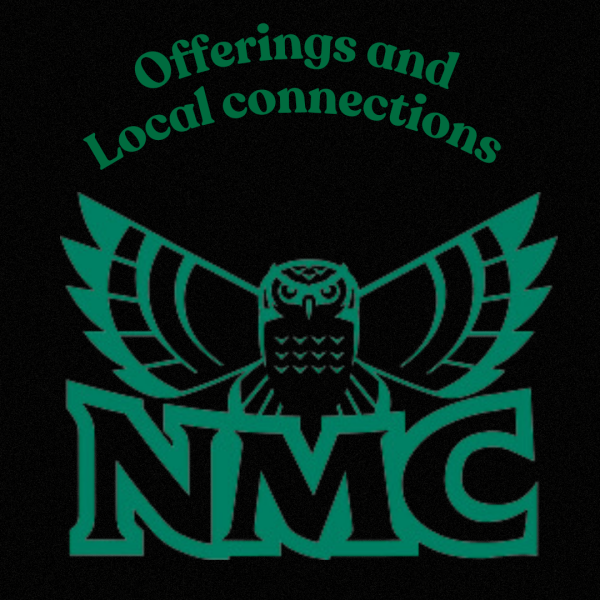StoryGraph’s Side of the Story

After overnight popularity, users continue to give the new reading tracker a chance.
February 17, 2022
Thanks to TikTok (specifically the “BookTok” side of the app), StoryGraph was popularized overnight during the summer of 2021. Not only is the app not in the hands of a company looking for more money, but it was actually designed and is run by bookworms.
According to StoryGraph’s website, “It’s run and built by Nadia Odunayo and Rob Frelow. It started life as a personal side project of Nadia’s to create and track progress through reading lists.”
Plus, something everyone wants from a building community, their team listens to its supporters’ concerns and includes them in the development of new projects. StoryGraph is only just starting their journey and they have already made giant steps in the improvement of their site since I joined in August 2021, including some features I’ll get to in a minute. Users are able to view the new and upcoming changes via the Road Map link on both the website and app (because yes, there is both a website and app, similar to Goodreads).
The fairly new app is free, but does have a subscription plan for those who want to unlock features that go more in-depth but are not necessary for the best experience. The most recent feature that was added to the app was the yearly wrap up, something that I know many of us who switched entirely from Goodreads to StoryGraph were excited to finally see. The addition of buddy reads and more friend features have also recently been added and users (including myself) have jumped at the chance to reach out to those who are already reading a book or at least have it shelved on their TBR (bonus points: the buddy reads have a built in discussion space for readers to talk).
Along with the new updates are the basic features that I was extremely excited and impressed by upon logging in.
The Analytics: Goodreads tracks your reading, but StoryGraph took it a few steps further. Users can now track the genre of books they’re reading throughout the year, the mood, the pace, the range of pages, whether or not it’s fiction or nonfiction, the format (audio, print, or e-books), their most read authors, and the comparison between page number and books read each month. With the PLUS plan, users can see direct comparisons between years too. This section is available throughout the entire year and is updated as users add even a few pages to their current reads.
The Rating System: If you use Goodreads, you know the one to five star rating system that allows readers only the whole numbers, which leaves us to comment for future reference on the real rating if it was on a point scale. Well, good news, StoryGraph developers also understood this issue with the old system and now users can rate their books anywhere from zero to five stars, but with the ability to include a 0.25 to 0.75 scale. Until the scale is being used like this, your overall yearly rating is likely completely off.
Friends and Privacy: Fairly new, the app added the ability to follow and befriend other users from around the world. Depending on their privacy settings, users are able to see their statistics and TBR pile; the only downside is the inability to chat with these users outside buddy reads.
User-Interface: When I started on Goodreads, the screen was full of ads or other readers with public profiles displaying the read they enjoyed or hated, along with the pop-ups to vote for the Choice Awards. It was so crowded. StoryGraph’s main page is completely uncluttered, with a clean background and simple categories, including your current reads, recommendations based on what information the specific user gives the company, your TBR pile, and popular reads that week. The most annoying part about StoryGraph that I have grown used to is the opening of new “pages” when you click on something new. Instead of being able to just go back to the main screen with the tap of the back arrow, you have to click through anything you just looked at (unless of course you click the main icons at the bottom of the page).
Reading Challenges: The app allows you to set both a page and book challenge for each year, but it also allows users to create their own challenges for the community, and allows for smaller, monthly challenges that users can opt into.
MISC: Though neither of these features really fit into their own category, I felt it important to include them. Goodreads has a similar feature in that you can look back on your progress of a book based on what you update as you read, but I believe StoryGraph does this slightly better. Instead of it being per book, the new app has a specific space for a reading journal that houses all of your updates from all books ever in it’s own spot on a timeline based on when you updated for each book. The app also has a built-in “did not finish” category, something Goodreads has always lacked, which allows the reader to see which books they decided not to finish and there is a space for them to write why.
Now I understand, you’re probably still apprehensive about making the full switch because what about your data that has been stored solely on Goodreads since middle school or the ability to connect with your friends? Well, StoryGraph allows you to import all of your data into their database with three simple steps that they readily walk you through.
This app is still being developed, but, at least in my opinion, it has a bright future. In the meantime, I will continue bouncing between the two, remaining heavily on StoryGraph, but it’s up to you what reading platform makes the most for your reading habits.
If you want to give it a spin, you can see my StoryGraph profile here!








